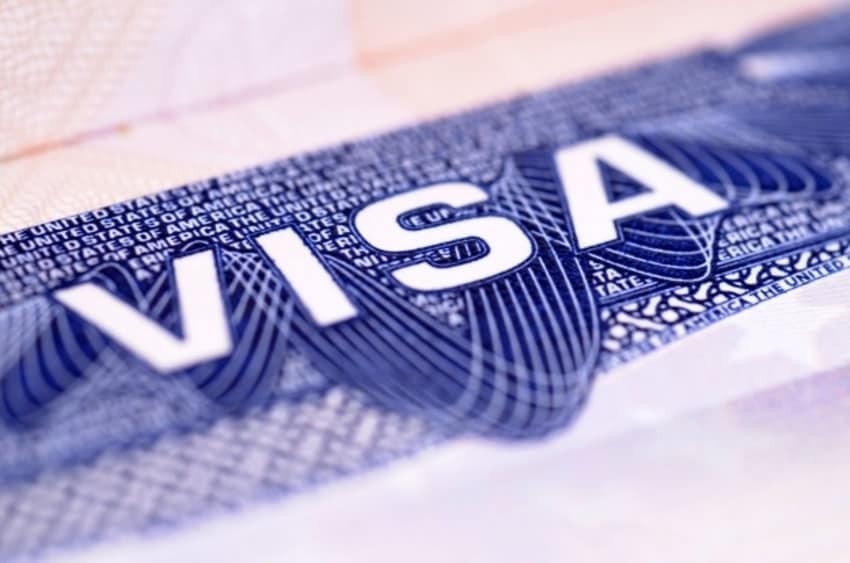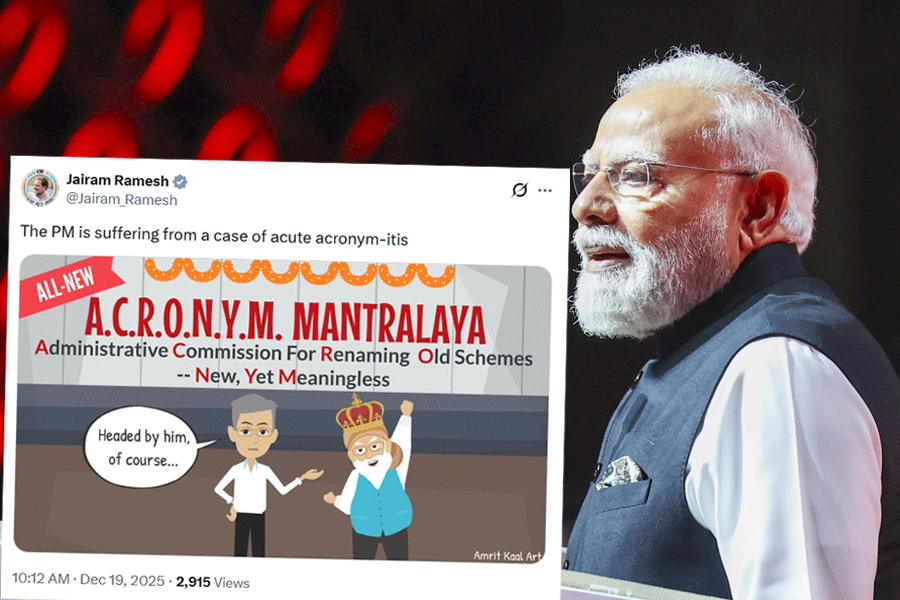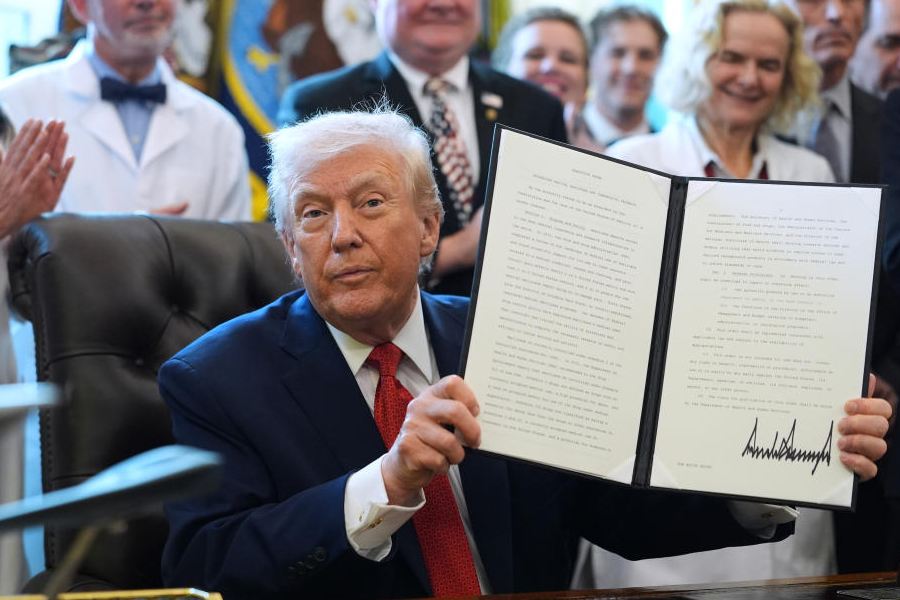Every wedding comes with a flurry of last-minute arrangements, but Sunil Dhar has an unusual task on his to-do list when his younger son gets married this June: make sure everyone is in the right country.
The Dhars are from the San Francisco Bay Area. But the wedding is set to take place nearly a thousand miles north in Blaine, Washington, near the Peace Arch, a monument along the border of the US and Canada with a park that extends into both countries. The park is considered a neutral zone, where people from both countries can mingle without going through immigration checkpoints.
It’s the only way the bride’s parents, who live in New Delhi, can attend. They would need visitor visas to enter the US, and the wait time in India to apply for these visas is nearly a year.
So the wedding will take place in the southern half of the park in Washington in a rentable building called the American Kitchen. The bride’s parents and other family members, who already have Canadian visas, will enter the park from the northern half of British Columbia. The parking lot on the American side is as far south as they can go without having to show IDs and immigration documents.
Dhar, 65, said he did not want to see a repeat of the visa-related absences during his elder son’s wedding last year in the Bay Area — especially when it comes to his future daughter-in-law’s family.
“This is a memory that lasts a lifetime,” Dhar said. “And I wouldn’t want her to not have her parents there at her wedding.”
It isn’t just India. Travellers from around the world are facing long wait times to apply for visitor visas to the US. Applicants from Brazil and Mexico must wait more than a year. In Colombia, the wait stretches into 2025.
The delays are taking an emotional toll on families. Many immigrants are not sure when they will see their ageing parents. Celebrations have been postponed because loved ones are unable to come to the US.
Struggling to catch up
American citizens can travel to more than a hundred countries without a visa. But billions of people around the world who aren’t citizens of one of the 40 countries in the US visa waiver programme must first apply before they can visit the US.
This document, called a B1/B2 visa, is typically granted for personal or business trips, and usually requires an in-person appointment at a US embassy or Consulate to submit digital photographs and fingerprints and be interviewed. At this interview, applicants are required to demonstrate proof that they have strong ties and intend to return to their home countries and have legitimate reasons to come to the US. This step is where the bottleneck has formed.
In 2020, US consular offices around the world shut their operations and stopped processing applications as the coronavirus spread. When applications began rolling in again, officials found themselves swamped.
“There was an enormous backlog that was created through the two years that the posts around the world were closed,” said Annelise Araujo, an immigration lawyer and a former chair of the American Immigration Lawyers Association’s New England chapter. “And I think that they don’t have enough resources to catch up.”
At the same time, within the US, a similar pandemic-linked crush of passport applications has overwhelmed understaffed passport centres, leading to 10- to 13-week delays for new passports and renewals.
The state department said it aimed to get to pre-pandemic staffing levels at US visa offices abroad by the end of September.
“Even before the pandemic, countries like Brazil, Colombia, Mexico, and India were our biggest operations in the world. So we’ve surged staffing to those locations,” Julie M. Stufft, deputy assistant secretary for visa services, said in an interview. “We issued more of these tourist visas last year in places like Mexico and Brazil than we did before the pandemic. This year, that will be true for India.”
Stufft said the department would also start a pilot programme this fall to allow certain work visa renewals within the US — allowing some applicants to avoid the time-consuming and expensive need to leave the US to reapply.
This programme, she said, will help reduce the workload of visa officers abroad: “We can take that work off their hands so they can see more first-time B1/B2 applicants.”
The department has also waived the interview requirement for those who had a visa in the past two years, a solution Stufft said was the “preferred way to mitigate wait times” over options like doing interviews over video.
All other applicants still require an interview.
Keep Out sign
While domestic travel is starting to return to pre-pandemic levels, international visitor numbers are still lagging. International arrivals into the US in 2022 continued to be down nearly 40 per cent from pre-pandemic levels, according to data from the National Travel and Tourism Office, a part of the Department of Commerce.
Brazil, India, Mexico and Colombia — where applicants are currently experiencing the worst delays — are among the top sources of international visitors to the US, according to the National Travel and Tourism Office data. More than 2.4 million visitor visas were granted to citizens of these four nations in fiscal 2019, the last year of pre-pandemic travel, state department data shows.
International visitors contributed $239 billion to the US travel economy before the pandemic. This fell to $83 billion in 2021, according to the latest available data from the National Travel and Tourism Office.
The travel industry is pushing the administration to do more about the backlog.
“We have people that want to come and spend their money here and we’re basically putting in front of them a ‘Keep Out’ sign. We’re basically saying America is closed for business to these travellers. And that is remarkably detrimental and shortsighted,” said Geoff Freeman, head of the US Travel Association, a trade group.
Congress has also gotten involved. A bipartisan group of six senators wrote a letter in February to the Bureau of Consular Affairs, asking it to address the issue of visa delays.
“While more visitors from across the country are coming to Nevada and helping our tourism industry bounce back, international visitation numbers continue to lag behind pre-Covid levels. We have more work to do to bring back international tourists,” said Jacky Rosen, Democrat of Nevada, who heads the Senate tourism subcommittee and was one of the lawmakers who signed the letter.
Rosen’s state is home to the annual CES tech show, in Las Vegas, where technology and consumer electronics companies showcase cutting-edge innovations.
More than a third of the nearly 119,000 attendees at CES this January were from foreign countries, with about 2,700 of them from countries experiencing visa delays, according to data provided by the show’s organizer, the Consumer Technology Association.
At least some exhibitors could not make it to CES because of visa delays, said Gary Shapiro, the association’s chief executive.
Bruno Da Costa heads Global Leaders Experience, a Brazilian company that runs an experience programme for C-suite executives.
On each of two to three trips to the US the programme runs each year, 40 to 50 executives visit companies, attend networking events and explore cities in their free time.
Normally, participants wait for an upcoming trip — usually in the next few months — if they are unable to get a visa on time. With the long wait times, Da Costa is rethinking his strategy.
“If the border is getting closed, we need to adapt and we need to redirect our participants to a different country,” Da Costa said.
He is sending the next group of executives to Israel and Dubai.
New York Times News Service











